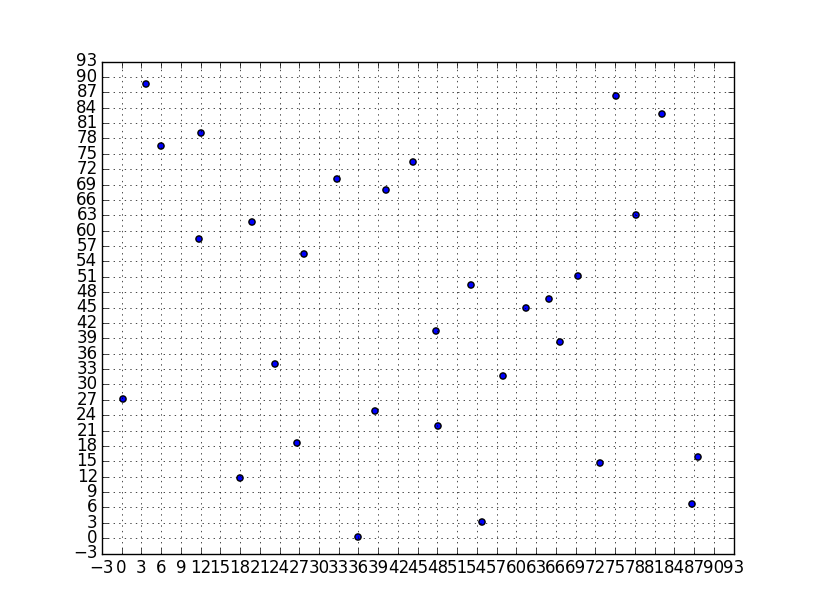#coding=utf-8
from __future__ import division
__author__ = 'wanghai'
import numpy as np
from matplotlib.ticker import MultipleLocator, FuncFormatter
import matplotlib.pyplot as pl
def LHSample( D,bounds,N):
'''
:param D:参数个数
:param bounds:参数对应范围(list)
:param N:拉丁超立方层数
:return:样本数据
'''
result = np.empty([N, D])
temp = np.empty([N])
d = 1.0 / N
for i in range(D):
for j in range(N):
temp[j] = np.random.uniform(
low=j * d, high=(j + 1) * d, size = 1)[0]
np.random.shuffle(temp)
for j in range(N):
result[j, i] = temp[j]
#对样本数据进行拉伸
b = np.array(bounds)
lower_bounds = b[:,0]
upper_bounds = b[:,1]
if np.any(lower_bounds > upper_bounds):
print '范围出错'
return None
# sample * (upper_bound - lower_bound) + lower_bound
np.add(np.multiply(result,
(upper_bounds - lower_bounds),
out=result),
lower_bounds,
out=result)
return result
if __name__ =='__main__':
D = 2
N = 30
bounds = [[0,90],[0,90]]
xs = (bounds[0][1] - bounds[0][0])/N
ys = (bounds[1][1] - bounds[1][0])/N
ax = pl.gca()
pl.ylim(bounds[1][0] - ys,bounds[1][1]+ys)
pl.xlim(bounds[0][0] - xs, bounds[0][1] + xs)
pl.grid()
ax.xaxis.set_major_locator( MultipleLocator(xs) )
ax.yaxis.set_major_locator(MultipleLocator(ys))
samples = LHSample(D,bounds,N)
XY = np.array(samples)
X = XY[:,0]
Y = XY[:,1]
pl.scatter(X,Y)
pl.show()
Python 拉丁超立方采样
最新推荐文章于 2024-03-10 22:48:33 发布






















 1万+
1万+











 被折叠的 条评论
为什么被折叠?
被折叠的 条评论
为什么被折叠?








